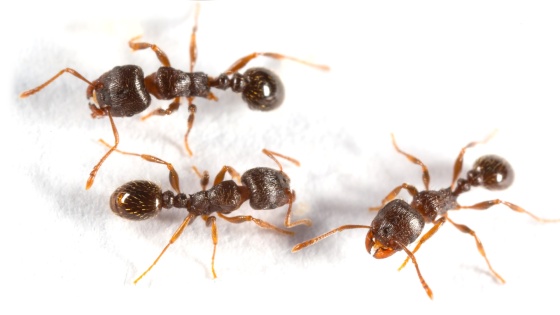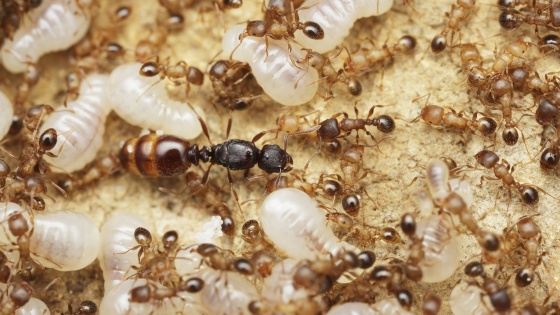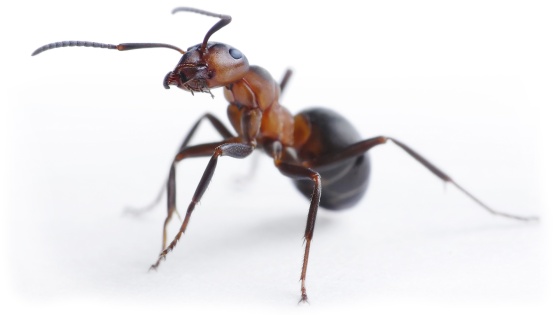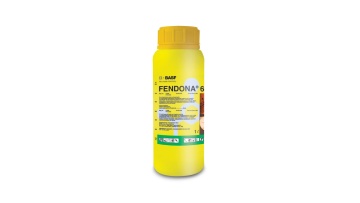Ants
One of the most successful of all insects, ants can be a serious nuisance pest in homes, hospitals, restaurants and other buildings. Their ubiquitous nature and social structure makes them particularly difficult to control.

There are two main pest species, the Black or Garden Ant (Lasius niger) and the Pharoah’s Ant (Monomorium pharaonis). They both cause nuisance as they travel widely in search of food, following trails and clustering around the food source.
Pharaoh's Ants pose the biggest risk to health. As they often feed in unhygienic areas such as drains and bins they can easily transmit pathogens. This can be of particular concern if infestations are found in sterile hospital environments. Infestations can also be more difficult to eradicate as the worker ants have the ability to ‘bud off’ new colonies if the main colony is under stress.
Black Ant
| Latin name: | Lasius niger |
| Also known as | Garden ant |
Length: | 2 - 12 mm |
Colour & description: | The workers are 2 – 5 mm in length and dark brown/black. Queens are upto 12 mm long and are brown. |
Habits & habitat: | Black ants nest outdoors in walls and under paving etc. They forage widely for food and water and commonly enter domestic premises and control is only required where they have become a serious nuisance indoors. Have only 1 queen per nest. |
Life cycle: | 50 – 70 days. Reproduction rate: A black ant colony has a single queen and tends to have about 5,000 individuals. A queen can live up to 12 years. |
Pharaoh’s Ant
| Latin name: | Monomorium pharaonis |
Length: | 1.5 - 5 mm |
Colour & description: | The workers are 1.5 - 2 mm in length and yellow-brown in colour. The antennal segments end in a distinct club with three progressively longer segments. Queens are between 3.6 - 5 mm long and are dark red in colour. They are winged but do not fly. |
Habits & habitat: | They require warm humid conditions so in many areas they are confined to buildings. In warm climates infestations can be found outside. Infestations can be found in a wide variety of locations including apartment blocks, hotels, hospitals, food handling premises etc.??Have many queens per nest and infestations tend to spread through budding. Foraging workers leave the main nest with brood to form satellite colonies. |
Life cycle: | 38 – 45 days |
Reproduction rate: | A Pharaoh Ant queen can lay 400 or more eggs in her lifetime. Most lay 10 to 12 eggs per batch in the early days of egg production and only four to seven eggs per batch later. |


What products do you offer for effective ant control?
- Tenopa: Active against all growth stages of crawling and flying insect pests for cost effective long term control.
- Fendona: A high performance residual insecticide spray treatment with rapid knockdown.
Physical Controls
Although generally ineffective on their own, physical means of excluding ants from buildings or food sources can be valuable alongside chemical controls. This is especially noticeable in guarding against re-infestation from new colonies around sensitive locations.
The most effective measures include:
- Ant-proof storage of foods in truly sealable containers
- Regular cleaning of floors and surfaces to remove spillages and scent trails
- Proper disposal of kitchen scraps and food waste
- Permanent sealing of access points with flexible caulk


